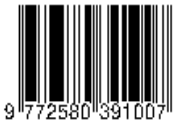THE USE OF CODE SWITCHING AND CODE MIXING IN EXTENSIVE READING CLASS AT UNIVERSITAS PGRI RONGGOLAWE TUBAN
Keywords:
code switching, code mixing, extensive reading classAbstract
This study aims to determine the type of code switching and the type of code mixing used at extensive reading class at Universitas PGRI Ronggolawe Tuban. The study applied qualitative research design. The aims of this study was to analyse the types and the most used code switching and code mixing. Participants in this study were lecturer and students at extensive reading class in Universitas PGRI Ronggolawe Tuban. The class contains 21 students from the 2018 class and 1 teaching lecturer. Data collection in this study was carried out by a voice recorder on a smart phone. From these data, the types and the most used of code switching and code mixing might be identified. Furthermore, there are several types of code switching namely intersentential code switching, intrasentential code switching, and tag switching. The next are the types of code mixing namely alternation, insertion, and congruent lexicalization. The results is two types of code switching that are found in the Extensive reading class are inter sentential switching and intra sentential switching. One type of code mixing that is found in the Extensive reading class is alternation. And the most used is code switching type inter sentential switching.
References
Rianda, D. (2017). Code Switching and Code Mixing Used by Boy William in Breakout Music Program at Net Tv. State Islamic Institute of Palangka Raya.
Chaer, A., & Agustina, L. (2010). Sosiolinguistik: Perkenalan awal. Jakarta: Rineka Cipta.
Hudson, R. A. (2012). Sociolinguistics. Cambridge University Press.
Bullock, B. E., & Toribio, A. J. E. (2009). The Cambridge handbook of linguistic code switching. New York, NY: Cambridge University Press
Fanani, A., & Ma'u, J. (2018). Code switching and code mixing in English learning process. LingTera, 5(1), 68-77. doi:http://dx.doi.org/10.21831/lt.v5i1.14438.
Danardana, M. D. (2015). Code Mixing in Undergraduate Female Student's Path Moments:a Study in Sanata Dharma University. Sanata Dharma University.
Routledge, Hudson, R. A. (2012). Sociolinguistics. Cambridge University Press.
Luthfiyani, F. (2014). Code Mixing on Korean Television Music Show After School Club. UIN Syarif Hidayatullah.
Creswell, J. (2013). Research Design: Qualitative, Quantitative and Mixed Methods Approaches. Sage.
Moleong, L.J. (2011). Metodologi Penelitian Kualitatif Edisi Revisi. Bandung: PT. Remaja Rosdakarya.
Sugiyono. (2015). Metode Penelitian Kombinasi (Mix Methods). Bandung: Alfabeta.
Creswell, J.W. (2013) Research Design Qualitative, Quantitative, and Mixed Methods Approaches. fourth Edition, SAGE Publications
Holmes, J., & Wilson, N. (2017). An introduction to sociolinguistics. Routledge.
Wardhaugh, R. (2015). An Introduction to Sociolinguistic). London: Blackwell.
Yule, G. (2014). The Study of Language. Cambridge: Cambridge University Press.







